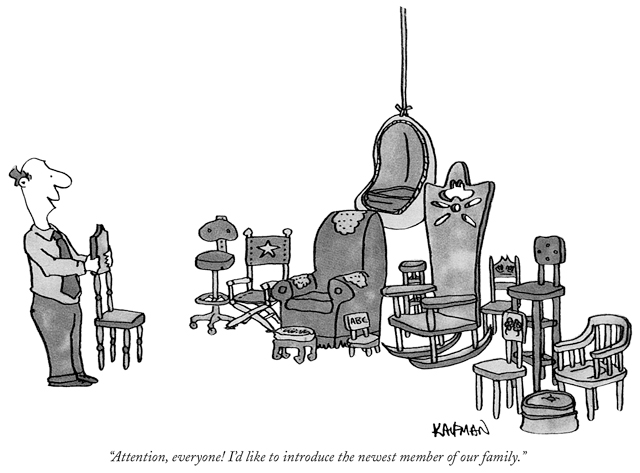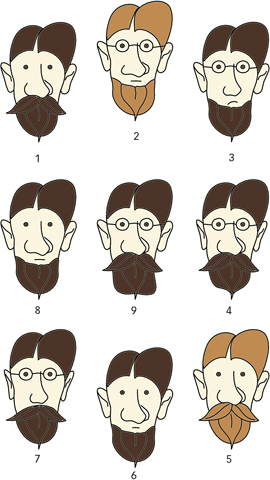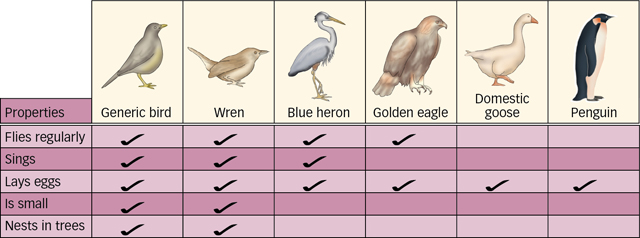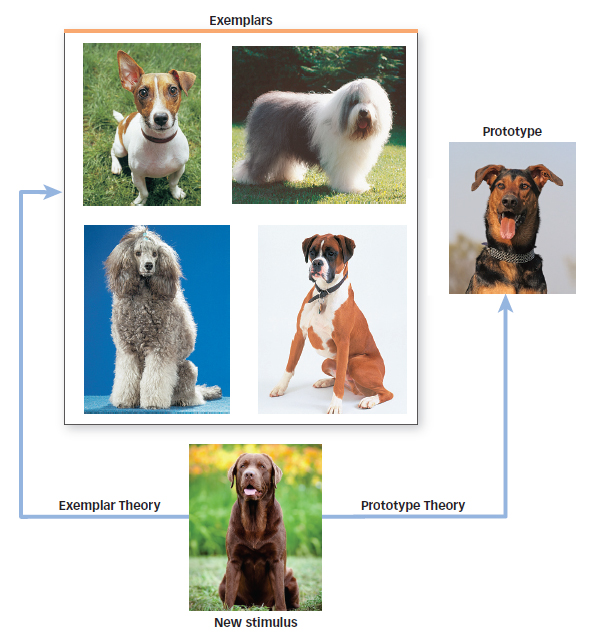9.4 Concepts and Categories: How We Think
In October 2000, a 69-

Concept refers to a mental representation that groups or categorizes shared features of related objects, events, or other stimuli. A concept is an abstract representation, description, or definition that serves to designate a class or category of things. The brain organizes our concepts about the world, classifying them into categories based on shared similarities. Our category for dog may be something like “small, four-
Why are concepts useful to us?
Concepts are fundamental to our ability to think and make sense of the world. We will first compare various theories that explain the formation of concepts and then consider studies that link the formation and organization of concepts to the brain. As with other aspects of cognition, we can gain insight into how concepts are organized by looking at some instances in which they are rather disorganized. We will encounter some unusual disorders that help us understand how concepts are organized in the brain.
9.4.1 Psychological Theories of Concepts and Categories
Early psychological theories described concepts as rules that specify the necessary and sufficient conditions for membership in a particular category. A necessary condition is something that must be true of the object in order for it to belong to the category. For example, suppose you were trying to determine whether an unfamiliar animal was a dog. It is necessary that the creature be a mammal; otherwise it does not belong to the category dog because all dogs are mammals. A sufficient condition is something that, if it is true of the object, proves that it belongs to the category. Suppose someone told you that the creature was a German shepherd and you know that a German shepherd is a type of dog. German shepherd is a sufficient condition for membership in the category dog.
370
Most natural categories, however, cannot be so easily defined in terms of this classical approach of necessary and sufficient conditions. For example, what is your definition of dog? Can you come up with a rule of “dogship” that includes all dogs and excludes all non-
9.4.1.1 Family Resemblance Theory

Eleanor Rosch put aside necessity and sufficiency to develop a theory of concepts based on family resemblance. The family resemblance theory states that members of a category have features that appear to be characteristic of category members but may not be possessed by every member (Rosch, 1973, 1975; Rosch & Mervis, 1975; Wittgenstein, 1953/1999). For example, you and your brother may have your mother’s eyes, although you and your sister may have your father’s high cheekbones. There is a strong family resemblance between you, your parents, and your siblings despite the fact that there is no necessarily defining feature that you all have in common. Similarly, many members of the bird category have feathers and wings, so these are the characteristic features. Anything that has these features is likely to be classified as a bird because of this “family resemblance” to other members of the bird category. FIGURE 9.6 illustrates family resemblance theory.

9.4.1.2 Prototype Theory
Building on the idea of family resemblance, Rosch also proposed that psychological categories (those that we form naturally) are best described as organized around a prototype, the “best” or “most typical” member of a category. A prototype possesses most (or all) of the most characteristic features of the category. For North Americans, the prototype of the bird category would be something like a wren: a small animal with feathers and wings that flies through the air, lays eggs, and migrates (see FIGURE 9.7). If you lived in Antarctica, your prototype of a bird might be a penguin: a small animal that has flippers, swims, and lays eggs. According to prototype theory, if your prototypical bird is a robin, then a canary would be considered a better example of a bird than would an ostrich because a canary has more features in common with a robin than an ostrich does. People make category judgments by comparing new instances to the category’s prototype. This contrasts with the classical approach to concepts in which something either is or is not an example of a concept (i.e., it either does or does not belong in the category dog or bird).


371
9.4.1.3 Exemplar Theory
In contrast to prototype theory, exemplar theory holds that we make category judgments by comparing a new instance with stored memories for other instances of the category (Medin & Schaffer, 1978). Imagine that you are out walking in the woods, and from the corner of your eye you spot a four-
9.4.2 Concepts, Categories, and the Brain

Studies that have attempted to link concepts and categories to the brain have helped to make sense of the theories we just considered. For example, in one set of studies (Marsolek, 1995), participants classified prototypes faster when the stimuli were presented to the right visual field, meaning that the left hemisphere received the input first (see the Neuroscience chapter for a discussion of how the two hemispheres of the brain receive input from the outside world). In contrast, participants classified previously seen exemplars faster when images were presented to the left visual field (meaning that the right hemisphere received the input first). These results suggest a role for both exemplars and prototypes: The left hemisphere is primarily involved in forming prototypes and the right hemisphere is mainly active in recognizing exemplars.
372
How do prototypes and exemplars relate to each other?
More recently, researchers using neuroimaging techniques have also concluded that we use both prototypes and exemplars when forming concepts and categories. The visual cortex is involved in forming prototypes, whereas the prefrontal cortex and basal ganglia are involved in learning exemplars (Ashby & Ell, 2001; Ashby & O’Brien, 2005). This evidence suggests that exemplar-
Some of the most striking evidence linking concepts and categories with the brain originated in a pioneering study conducted over 30 years ago. Two neuropsychologists (Warrington & McCarthy, 1983) described a man with brain damage who could not recognize a variety of human-
Category-
The type of category-

373
How do particular brain regions develop category preferences for objects such as tools or animals? One possibility is that these preferences develop from the specific visual experiences that individuals have during the course of their lives. An alternative possibility is suggested by the study of Adam that we just considered: The brain may be prewired such that particular regions respond more strongly to some categories than others. A recent study tested these ideas by examining the activity of category-
What is the role of vision in category-
These results provide compelling evidence that category-
We organize knowledge about objects, events, or other stimuli by creating concepts, prototypes, and exemplars.
We acquire concepts using three theories: family resemblance theory, which states that items in the same category share certain features, if not all; prototype theory, which uses the most typical member of a category to assess new items; and exemplar theory, which states that we compare new items with stored memories of other members of the category.
Neuroimaging studies have shown that prototypes and exemplars are processed in different parts of the brain.
Studies of people with cognitive and visual deficits have shown that the brain organizes concepts into distinct categories, such as living things and human-
made things, and also suggest that visual experience is not necessary for the development of such categories.
374